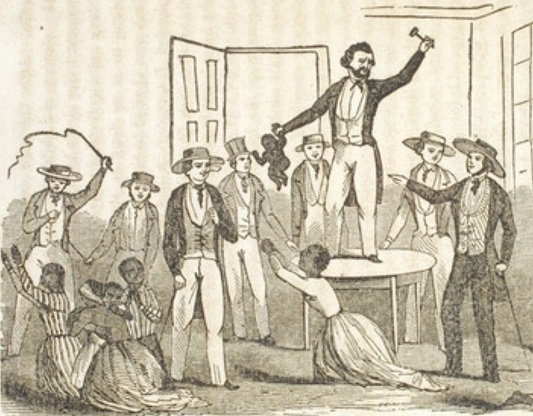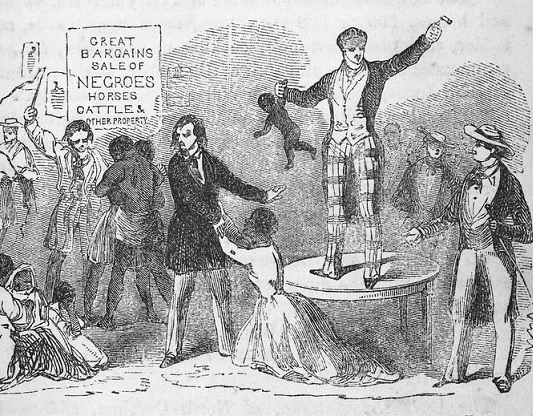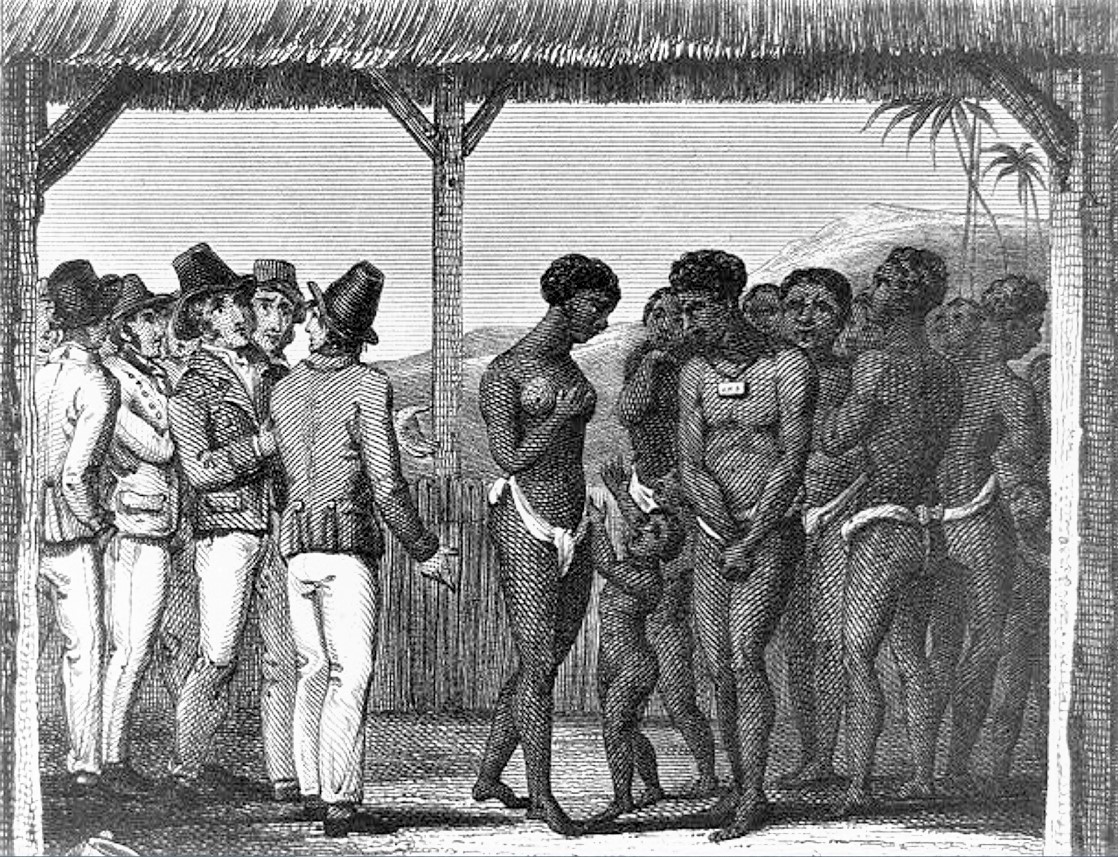
Slaves for Sale

Introduction
When a slave ship arrived in Amenca or the West Indies, the enslaved Africans were fattened up for sale, and their skins were oiled to make them shine. Traders hid sores by rubbing them with rust, and enslaved people with dysentery were 'plugged' with rope dipped in tar.
After you have studied this webpage, answer the question sheet by clicking on the 'Time to Work' icon at the top of the page.
Links:
The following websites will help you research further:
•
Slave auctions: BBC Bitesize.
• A short History Channel documentary on
a slave auction as shown in the TV series Roots.
1 Captain John Stedman, 1773
An extract from The Narrative of a Five Years Expedition against the Revolted Negroes of Surinam (published
1796).
In 1773 Stedman signed up with the Dutch military to quell a
rebellion of Maroons (rebelling against slavery) in South America. His book was
based on his journal (1790), which in turn was compiled from jottings and notes he made continuously during his days in Surinam.
Although he supported the institution of slavery, he sympathised
with the suffering enslaved, and his candid descriptions of hanging, lashing, torture and abuse made his book popular with the Abolitionists.
Such a resurrection of skin and bones, as … appeared to be risen from the Grave …. walking skeletons covered over with a piece of tanned leather. .
2 Anonymous letter, 1838
This description was written "by a young member of the Society of Friends" (Quakers) of a "short visit" to Havana in Cuba. Whilst the author was openly opposed to the slave trade – "the disgrace of the civilised world" – he did not oppose the idea of slavery: "on the contrary, I can bear frequent testimony to the lenient treatment of the enslaved, and their apparent contentment on estates it was my fortune to visit".
They were crouched down upon their benches around a large room, during a visit of more than an hour not a word was spoken. They were nearly all naked … with a few exceptions they were but skin and bone, too weak to support their weary bodies...
3 Henry Laurens, 1756
Letter from Henry Laurens, a slave trader, to Vernon Brothers, Newport (1756).
They seemed past all hope of recovery. God knows what we shall do with what remain, they are a most scabby flock, all of them full of sores – some have extreme sore eyes, three very puny children and add to this the worst infirmity of all with which 6 or 8 are attended (i.e.) Old Age.


